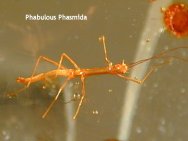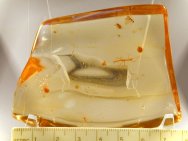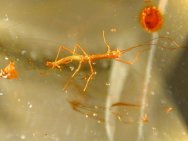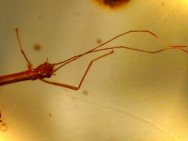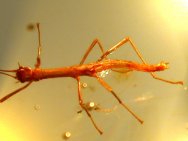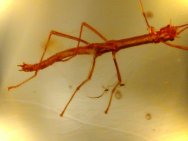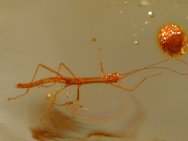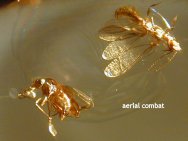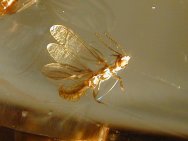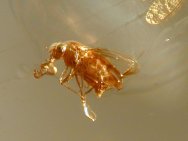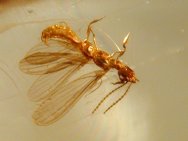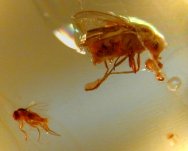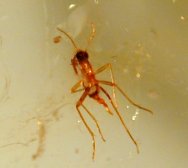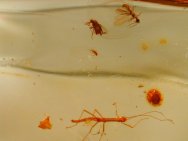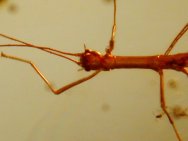Fossil Amber Insects, Rare Phasmida (walking stick)
Geological Time: Pleistocene to Pliocene
Size: Fossil amber 79 by 55 mm; 44.4 grams
Fossil Site: Andes Mountains in Colombia
|
This
fossil amber exemplifies both rarity and beauty, this amber piece
is Insect Order Phasmida (the stick or leaf insects) is believed to have appeared in the Lower Triassic and is one of the most interesting Orders in Subphylum Insecta. They are a poignant example of the innovation of natural selection in creating stealth for survival. They typically are either stick-like or leaf-like in appearance, a camouflage or mimicry that is their common characteristic; many will also play possum for hours. "Phasmid" is derived from the Latin term for phantom (phasma), and finding them in the wild can be very difficult for even an experienced collector. You might correctly guess then, that fossil Phasmida are exceedingly rare -- hence the paucity of specimens in this fossil gallery. They do not have their hindlegs adapted for jumping as in the closely related order Orthoptera (grasshoppers, katydids, crickets and relatives). Unlike many insects, they make superb pets. A phasmid will usually live from one to two years, depending on the species. Sexual dimorphism is usually extreme with diminuative males. Some species are completely or partially parthenogenetic. They extend their evolutionary stealth to their eggs that are large and often closely resemble plant seeds This allows the females to lay viable eggs without a mate; indeed there are some species in which males are unknown to exist. Some 2500 species of Phasmids are extant. See also: Museum Fossils Fossil Amber |
